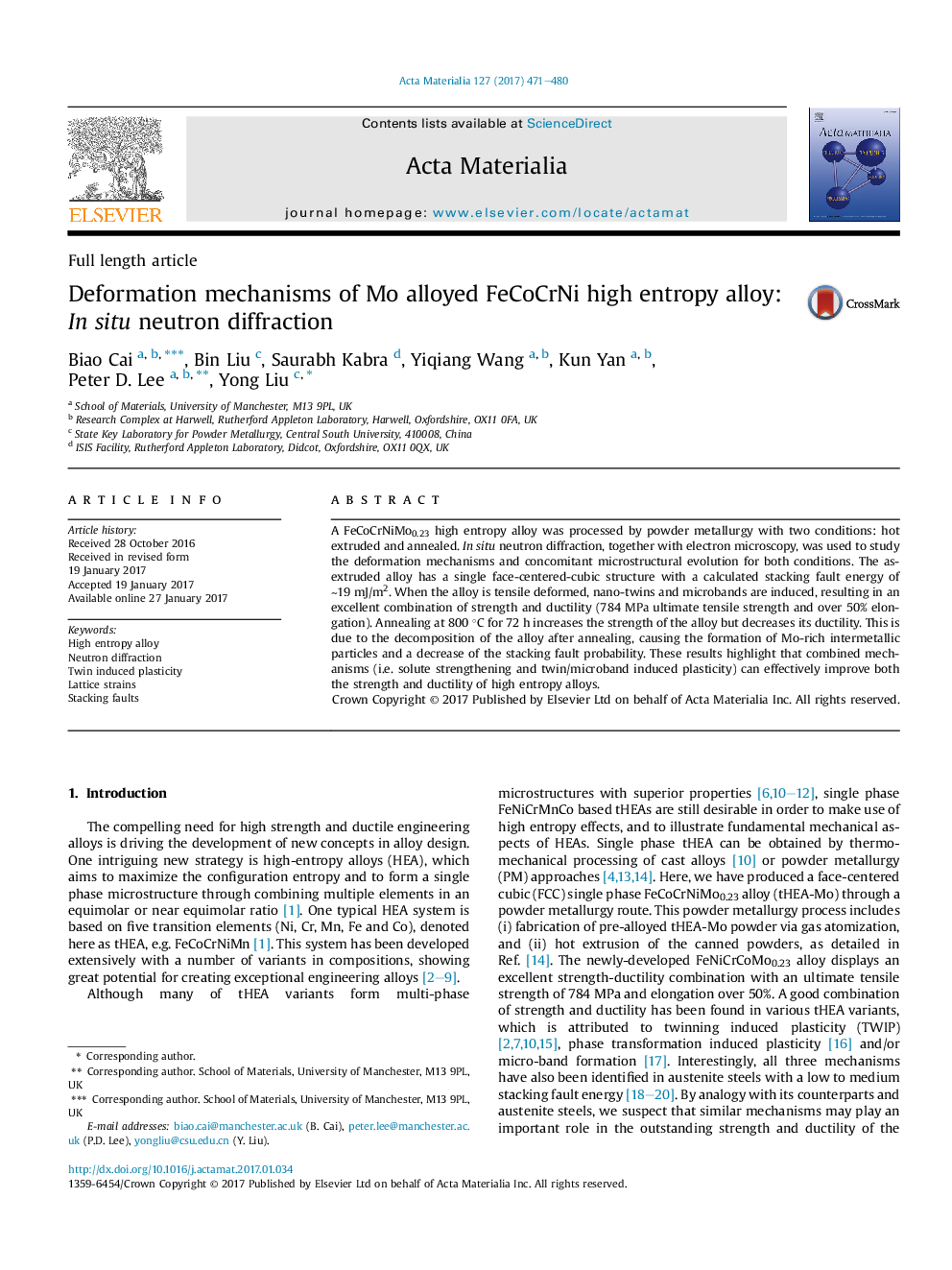| Article ID | Journal | Published Year | Pages | File Type |
|---|---|---|---|---|
| 5436350 | Acta Materialia | 2017 | 10 Pages |
A FeCoCrNiMo0.23 high entropy alloy was processed by powder metallurgy with two conditions: hot extruded and annealed. In situ neutron diffraction, together with electron microscopy, was used to study the deformation mechanisms and concomitant microstructural evolution for both conditions. The as-extruded alloy has a single face-centered-cubic structure with a calculated stacking fault energy of â¼19 mJ/m2. When the alloy is tensile deformed, nano-twins and microbands are induced, resulting in an excellent combination of strength and ductility (784 MPa ultimate tensile strength and over 50% elongation). Annealing at 800 °C for 72 h increases the strength of the alloy but decreases its ductility. This is due to the decomposition of the alloy after annealing, causing the formation of Mo-rich intermetallic particles and a decrease of the stacking fault probability. These results highlight that combined mechanisms (i.e. solute strengthening and twin/microband induced plasticity) can effectively improve both the strength and ductility of high entropy alloys.
Graphical abstractDownload high-res image (289KB)Download full-size image
